Should You Pick A Contractor or Interior Designer For Your Home Renovation In Singapore?
First things first, when you begin your home renovation journey the choice can be. overwhelming. At this stage, you don’t know what you don’t know. This guide is intended to help you on your journey and whether an interior designer (ID) or a contractor best fits your needs, budget and can bring. your vision to life.
When you begin your home renovation journey the choice can be. overwhelming. At this stage, you don’t know what you don’t know. This guide is intended to help you on your journey and whether an Interior Designer (ID) or a Contractor best fits your needs, budget and can bring your vision to life. There are many elements that drive up or down the cost of renovation, hiring the right skills for your vision, is critical to ensure that you don’t go over your budget.
Home renovation is not cheap.
Let’s be clear, renovating your home is a time-intensive and costly undertaking. According to renovation portal Qanvast, the average 4-room HDB BTO flat renovation is estimated to cost about $43,000 to $45,000 in 2020. Making over a resale flat is more extensive (and therefore expensive), and is expected to cost $45,000 to $52,000.
Here is where things get interesting. The typical Singaporean makes around $4,563 a month. After CPF, this comes to about $3,650. Assuming you save 20% of this (an average savings amount), you would stash away $730 a month. Let’s further assume that your significant other does the same so you are putting away almost $1500 dollars a month towards your renovation.
Breaking this down, if the average 4-room HDB BTO flat renovation is estimated to be $43,000, you would need to save for a whopping 28.6 months or put it another way over 2 years (2 years and 4 months to be exact). And this is if you come in on the average side of the estimates, you never know when your renovation costs will be higher due to unforeseen circumstances.
Some people believe that hiring contractors rather than an ID will save them some money when doing the renovation. Let’s investigate further.
Interior Designer or Contractor, what’s the difference?
Simply put, when we say Interior Designer in Singapore it is someone who coordinates and manages your renovation project. They conceptualise design ideas specific to your lifestyle, oversee the entire project (including sourcing for and liaising with contractors), and go furniture and material shopping with you to ensure a harmonious theme throughout the house.
A contractor, by contrast, is only responsible for executing the renovation work you request (e.g. demolishing, hacking, tiling). They do not offer design advice – and typically only give their input or advice in on matters relating to the structural integrity of your home.
Depending on your requirements and. what you want them to. do, your contractor may need to outsource the work to subcontractors (e.g. electricians, plumbers, and painters). Bear in mind you will typically l need to liaise with these subcontractors also.
There is no one size fits all approach.
First things first, not every homeowner is suitable to go down the DIY Contractor route. Whilst it can save money to hire Contractors, Interior Designers bring a lot of benefits to a project, so don’t dismiss this out of hand. There are no hard and fast rules, you need to do what makes the most sense for your project. Having said that, there are some tips on how to find the right Interior Designer that may help you to narrow down your options.
If you prioritise design and convenience, consider an interior designer.
If your priorities are design and service, then you would be better off considering using an Interior Designer, commonly referred to as an ID. Typically Interior Designers provide a design plan before any works start. These can include floor plans and 3D rendering. This makes. it easier for you to visualise the finished state of your home. It also means that you can make. changes whilst the design is still on paper (as it were) rather than being midway through the project and deciding to move a feature wall.
Interior Designers also take on the task of liaising with Contractors and any Subcontractors. This saves you time and also the hassle of overseeing every Contractor. The other major advantage of an ID is that they know the sequence or order that the works come in handing over this project and timeline management can be a relief for homeowners to save their own time and stress levels. You will of course need to pay more for the services of an Interior Designer, however, one question to ask yourself, would the money saved by not engaging an interior designer to be worth my own time saved?
The good news is that not all Interior Design firms charge the same, some will work on a percentage basis, some will work on a per hour basis and some will charge a flat fee. Its up to you, as the homeowner, to work out how much of your budget you can spend to engage with an Interior Design firm. There are always certain qualities that you should prioritise when looking for your Interior Designers such as reliability, experience and dedication.
If you prioritise cost savings and know what you want, consider hiring Contractors.
Have you sat down and looked at your budget and can’t justify any additional expenditure on Interior Design? Or perhaps you already know what your vision is and how you want your home to function and look like?
Outsourcing to Contractors is an option to consider. Contractors, in general, don’t offer additional services such as 3D rendering which allows you to visualise the end product, however, more and more are offering this to compete with ID”s and win over homeowners. There are also multiple apps and websites available now FOR EXAMPLE which will allow you as a homeowner to plan out your space, add your furniture and even change the textiles with the plan so you can visualise what your home will look like like when completed.
Going without an Interior Designer may seem daunting, however, if you know what you already want, then hiring Contractors to execute can be a great option. One consideration to keep in mind is that coordinating Contractors and Subcontractors can take. up a lot of your time. You may need to visit the site more often or have to spend time. coordinating between Contractors.
So what to choose?
In the end, only you can make that decision. There are pros and cons to both approaches. The budget will factor heavily but also, whether you want to undertake the project yourself. Be mindful that no matter which approach you take, project costs can creep up, unforeseen circumstances will happen and ultimately what you have in your mind or on paper, may not be the same as the finished product.
It is ultimately not “just a BTO, resale flat or condo”, this is your home and your money.
How To Make Your Small Singapore Bathroom Feel Bigger.
If you're wondering how to make a small bathroom look bigger, there are lots of clever design tricks you can use. Whether with decor, mirrors, or layout, you can instantly make your space feel larger and brighter. Below, we take you through all the tricks you can employ to make a small bathroom look bigger. You can also use these bathroom ideas in more spacious areas to max out the square footage.
Make your small bathroom feel more spacious with an all white scheme.
Most of us would like to make our small bathrooms look more spacious. After all, bathrooms are often the smallest rooms in the house. Yet they must function well, and because we go there to relax, we want them to look great, too. So, it’s worth learning key interior design tips and tricks. If you're wondering how to make a small bathroom look bigger, there are lots of clever design tricks you can use. Whether with decor, mirrors, or layout, you can instantly make your space feel larger and brighter. Below, we take you through all the tricks you can employ to make a small bathroom look bigger. You can also use these bathroom ideas in more spacious areas to max out the square footage.
Top Tips To Make Your Bathroom Seem More Spacious.
Install Sliding Doors.
If you find yourself doing acrobatics to dodge the door while entering and exiting your tiny toilet, you’ll probably want to consider replacing the door with a sliding or bi-fold one. This way, you won’t have to factor in the area taken up by the door as it swings, giving you extra room.
When choosing a sliding door, using lighter materials such as wood makes it easier to slide open while putting less strain on the track mechanism supporting it. You may even opt for a door that slides into a wall for a minimalist aesthetic. One key point to note is that not all sliding doors or bi-fold doors come with a lock, so make sure you ask your supplier before you sign up for new bathroom doors.
Install Wall-mounted Or Compact Fixtures.
Wall mounted vanities can make your bathroom appear bigger.
Floor space comes at a premium when it comes to tiny bathrooms, which is why it’s prudent to keep as many fixtures off the floor and opt for compact versions. Where possible, install a wall-mounted basin, toilet bowl and cabinets. It’ll give you more floor space to work with and a less cluttered look. The best part: keeping the floor obstruction-free will make cleaning a breeze, and it also provides less opportunity for grime and mould to accumulate. A compact corner basin and faucet take up almost no space at all and will do wonders in keeping your toilet a clutter-free area.
Build Shelves Into Toilet Walls For Storage.
Maximising space doesn’t just stop at using smaller appliances; you can exploit every nook and cranny by building shelves into non-structural walls. Doing so adds storage space for your toiletries and a little more depth to your bathroom as it makes your walls look a little farther away than they are.
Replace Windows To Let In More Natural Light.
If a room is poorly lit, it can make even the most spacious room feel claustrophobic. By allowing more natural light into the bathroom, the space is opened up visually and make it seem more spacious than it actually is. The default louvre windows most homeowners get with their HDBs can sometimes be rather dim. For an easy fix, upgrade these panes to frosted glass options that allow more light in, or even swap the bulky frame of louvre windows for the cleaner design of top-hung windows. HDB has several rules regarding window type and materials depending on the unit, so be sure to check with your contractor.
Place Mirrors To Reflect Light.
Combine mirrors and lighting to give the illusion of space.
Clever placement of mirrors can make bathrooms appear double in size and enhance aesthetics, especially when installed in neat and minimalist toilets. When it comes to size, we suggest going BIG with your bathroom mirror. Pick longer or more expansive mirrors to accentuate vertical and horizontal lines to add height and width, respectively. As a bonus, opt for frameless mirrors to further give the illusion of space as there is less visual clutter. If you’re feeling fancy, you may also choose to install mirrors with backlighting, making your bathroom look extra-posh while introducing more ambient light.
Use Glossy Materials Such As Marble For Walls And Flooring.
To amplify the maximum amount of natural light, use glossy, light-reflecting materials such as marble for our walls and flooring. Not only does it make your bathroom feel more extensive, it also gives it an opulent, five-star hotel-worthy touch.
Use A Bright And Consistent Palette.
Colours can affect our perception of space, so we should choose carefully. Warmer tones make for cosy vibes, but cooler palettes help rooms feel cleaner and more open – while also reflecting the most amount of light. In addition to selecting the right colour for the various surfaces, picking bathroom light fixtures with a suitable colour temperature is also essential. Pick bright bulbs that lean toward a cooler tone to enhance the effect of visual spaciousness.
Use Similar Tile Designs For Your Floor And Walls.
When it comes to tile designs, going with a lighter theme while maintaining consistency with similar shades helps avoid breaking up space visually, resulting in a seamless and spacious bathroom design. To accentuate this, line your walls with long tiles to emphasise the height of your bathroom and match it with similar floor tiles to complete the illusion.
A similar wall and floor tile can make your bathroom seem more spacious.
Use Glass Shower Screens.
By opting for clear glass dividers or translucent shower curtains, you’ll allow more light to invigorate the space while keeping the area unobstructed. If shower curtains or dividers do not match your aesthetic, you can also consider doing away with them altogether.
Top And Tail The Bathroom With White.
If your space is narrow, one top interior design tip is to paint the ceiling white and have the floor tiles in a light colour also. Pick up the white again with the basin unit. It prevents the ‘middle’ of the scheme from looking too heavy. Use white paint around the window instead of tiles to highlight it and reflect the light back in.
Try Tone on Tone.
Not a fan of stark white? You can still get a huge and breezy effect with a tone-on-tone palette in warm beige, soft greys coloured faint hues such as powder blue. Choose a neutral tile and find a paint colour for the remaining walls that picks up one of its hues. The overall effect is still serene and spa-like, without the jarring visual breaks to shrink your perception of the space.
Use a Floating Vanity.
A floating vanity is great within a small bathroom. It gives you lots of room to store daily essentials, but the peek of flooring underneath makes the area feel more open. In a tiny space, having a little bit more room to plant your feet can make a big difference.
Use Bright Lighting.
Good lighting is essential to making any space look big and open, but in bathrooms, which often don’t have much natural light available, it’s imperative. Plus, in a bathroom, you need good lighting to do things such as shave or apply makeup effectively. For these reasons, it’s vital to have a rich lighting scheme, preferably with multiple light sources at different locations. A grid of ceiling lights, as well as sconces or a contemporary edge-lighted mirror, will help you avoid shadowing and make the space feel bright and open. In a small bathroom, or where you can’t add new electrical for lights, try changing your ceiling light to one with multiple bulbs, so you have light coming from several directions from one fixture.
Opt For A Corner Tub Or Shower Tub Combo To Save Space.
Instead of having just a standalone shower in your HDB bathroom, try installing a shower-tub combo that takes up the same space as a regular shower. If a shower-tub combo is not for you and you’d instead separate your bath and shower, you could opt for a corner tub. These types of bathtubs take up much lesser space while still affording you the luxury of having a warm and relaxing bath after a tiring day at work.
Your Guide to Industrial Design Style.
The industrial design aesthetic manages to give a sleek looking modern space; yet also manages to incorporate an organic and old industrial charm. When you say industrial style, many people think about stainless steel and sharp edges. However, there can be much more to it. Our step by step guide shows you how to bring this into your home.
A few design trends are flexible, easy to implement, and a lot of fun to look at. And one of those is industrial style interior design. The industrial design aesthetic manages to give a sleek looking modern space; yet also manages to incorporate an organic and old industrial charm. When you say industrial style, many people think about stainless steel and sharp edges. However, there can be much more to it.
Industrial Living Room With Wood Tones
There are no true principles that urban industrial style was built from. Instead, it slowly morphed into today's Open-plan spaces with high ceilings, huge windows, and lofted bedroom space. The key element for any urban-industrial space is flexibility. Thoughtfully arranging furniture turns your Singapore HDB or Condo into whatever you need it to be — everything from a nursery to an office, while still being a place to call home.
What Is Industrial Design & Where Did It Originate?
Industrial Design Dining Space
The industrial look has been around for centuries, but initially, it was never a “style” at all. Or at least, it didn’t set out to be. In the 1700s, the industrial revolution hit, and the world was changed forever. Factories sprung up all over major cities in Europe and America. These large buildings were simple, functional, and utilitarian. They had huge windows to let in natural light and an open plan floor space. To save money and minimise fire risk, most were kept plain – no paint, and with bricks, pipe, and ductwork left completely exposed.
Two hundred years later, advancements in the construction industry allowed us to make bigger, better, and more efficient structures. The old factories closed down, giving way to modern manufacturing plants on the outskirts of the city. But the factories wouldn’t stay abandoned for long. In the mid-20th century, many of these spaces were revived. Not as factories, but as housing.
Thus, the “industrial chic” look was born. Interior designers worked with the exposed brick and metal to create spaces that were bold, edgy and could blend with any style.
Industrial really refers to the fact that this style is very much fuss-free. It is a no-nonsense type of interior design and pulls a lot of inspiration from warehouses, industrial structures, and factories. But that does not mean that it needs to be a cold environment.
Urban Industrial design is unique in comparison to other home styles. Instead of manifesting from an architectural movement, this gritty look came from a lifestyle choice of artists and musicians. Forgoing traditional housing for makeshift live-work spaces inside of abandoned warehouses and factories, artists created this thrown-together look of street finds, thrift store purchases, and pieces made out of whatever happened to be laying around.
You can have a nod to the industrial style interior design simply by having some bare bricks and some salvaged materials; exposed brickwork, industrial pipe, and more to pull this look together.
Why industrial style interior design might be for you.
Industrial bedroom with metal light fixture
There are some styles of interior design that are hard to keep up with. For example, if you love minimalism, but you have a family, minimalism can be hard to keep control of. More people usually means more stuff. You have to be very smart with storage, and that can take its toll. However, interior design that is based on industrial styling is super flexible.
While most people try to conceal the building materials of their home, the industrial interior design distinctly displays these materials. This results in the kind of raw, unfinished look that has recently become an incredibly popular design style. The industrial design mixes the old with the new by blending wood and metal elements in a unique and upscale way.
This style of home interior design is perfect for those living in an urban environment, so if you’re moving into or thinking of redoing your Singapore HDB apartment, renovating your BTO or your Condo, the industrial interior design may be the style for you. It’s all about showcasing neutral tones, an open layout, and mixing wood and metal furniture to achieve that signature industrial look.
Styling tips to bring Industrial Design into your home.
Bring industrial style into your bathroom with unique fixtures
The Key Features Of Industrial Decor.
Industrial home design features exposed pipes, air ducts, wire, beams, and brick.
Industrial homes are usually open concept.
Industrial furniture and decor is often blocky in shape and made of metal, wood, leather, and even salvaged parts.
Here’s how you can achieve the modern industrial style throughout the entire home.
Layout.
All industrial spaces tend to follow the “converted warehouse” look even if the building is new construction and was never truly a warehouse, to begin with. This means brick walls, high ceilings (or the illusion of these), natural light, exposed piping, and small-plank wood or poured concrete floors. Carefully placed furniture and area rugs define each space as a living area, dining area, and office.
An open plan layout is a core element of industrial design.
True industrial lofts that have been converted from warehouses typically don’t have walls, but if they do, the walls are not full height, allowing natural light from the floor-to-ceiling windows to penetrate every corner.
If you have a loft to work with, the only clearly defined rooms are the kitchen and the bathroom. Often, lofts feature a one-wall kitchen with a cabinet, fridge, sink, and stove all along a single wall. Using a kitchen island is a great way to further define the kitchen and it can often double as a dining table. This keeps the kitchen open to the rest of the space and sticks with the flexibility rule that defines industrial design.
Industrial Style Flooring.
Flooring is similar to all other architectural elements of industrial design, in that it is usually made from natural materials such as wood and concrete. Concrete can be left a plain grey and polished or stained to give it a more old-fashioned look, which can bring in an interesting textural element. A concrete floor would feel unfinished in many other spaces, but it adds some real visual impact within industrial style homes.
Concrete floors can feel cold and impersonal to some people, so an alternative to consider is another natural flooring material like hardwood. If you’re doing a traditional take on industrial design, you would select distressed floors made from reclaimed wood. For a modern spin, you might choose polished wide planks of wood instead.
Area rugs to help delineate and define separate spaces. You can position these rugs carefully to create spaces like a living room and a dining nook. Proper rug placement is one of the easiest ways to help an open concept floor plan flow more naturally.
Concrete Or Brick Walls.
One of the easiest ways to achieve the industrial vibe is by leaving your concrete or brick walls just as they are. No paint or plaster is necessary.
Concrete is a blank slate – literally. You can match it with neutrals like grey or brown, or you can experiment with contrasting colours. What works best in an industrial styled home that has exposed brick walls and uncovered windows to let in the lightest, is a blend of deep colours, soft fabrics, and lots of patterns.
Colours.
Generally speaking, industrial design features neutral colours. Black and white both feature prominently, along with various shades of grey and brown. Using neutral tones throughout the home helps it feel more spacious and lends a sense of continuity. Using neutral tones can also help the industrial details in a room pop out even more.
You can bring in your own personality with bright pops of colour in the form of art, rugs, and some other decor that will be in direct opposition to your industrial style.
Exposed Piping.
In most homes, exposed pipes and structural beams would be plastered over, covered up, and painted before you even move in. But with industrial house design, you can skip that last step and save on money and stress. Exposed piping is a staple of the industrial style. This makes it perfect for HDB’s where piping cannot be permanently concealed. And contrary to what some people believe, it isn’t messy at all. It’s authentic, raw, and captivating.
Use Metal And Wood Furniture.
A key feature of industrial design is the use of metal and wood in the space. Selecting furniture pieces made from either metal or wood blends the old with the new and gives your home an interesting contrast. Wooden pieces should be weathered rather than new looking, so find unfinished furniture.
For metal furniture, you can choose an antique brushed or oiled finish to give your home a vintage feel. If you prefer a more modern look, you can opt for polished chrome. And metal furniture doesn’t have to be uncomfortable; you can find plenty of comfortable metal bar stools or tables that will accentuate your home's style without sacrificing comfort. After all, this style is meant to be inviting, not severe.
Leather has a prominent place in industrial-style spaces, as (you guessed it) furniture upholstery. Leather embodies the essence of industrial style, which is all about taking something old and giving it new life and purpose. It's equal parts rugged and refined. Think about furnishing your industrial living space with a cosy leather club chair or leather side chairs with metal legs. If you don't want to go too crazy with leather, think about furnishing your space with a leather ottoman or pouffe instead.
Soft Textiles.
Without any softness, an industrial space can feel a bit cold and uninviting. This is where faux fur and thick wool textiles come in. Soften the hard lines and cold metal of industrial furniture by throwing thick wool throw blankets over your sofa and side chairs. It might seem glamorously out of place in concept, but a faux sheepskin or hide rug can be one of the best additions to an industrial space, as it can add softness and texture to bare floors.
As far as patterns, once again the flexibility of industrial lofts comes into play. It can be any pattern you like and can even be a combination of boho, geometric, and stripes. This is a chance to experiment and discover your own personal look.
Industrial Shelving.
What do you get when you combine wooden planks and metal pipes? Chic industrial storage solutions for your home.
Open shelves are a great way to display your knick-knacks and show off your personality. These are also perfect for defining space within your home.
Edison Lights
Get it right, down to the details. Industrial-style lighting can come in many forms, most of which are old vintage lamps making a comeback. But the most popular style by far is the Edison light. These filament bulbs from the 20th century give off a warm yellow-orange glow.
You don’t have to swap out your energy-efficient lights for century-old bulbs, however; there are many LED versions in the same vintage style. Hang it loosely via its wires or frame it in metal to get the look you’re going for.
Exposed walls bring an industrial style together
Antique-Looking Wall Art.
When it comes to wall art, industrial style favours prints of old designs over new and modern art. Blueprints, diagrams, maps, and vintage posters all work really well in industrial spaces where abstract paintings, colour-blocked posters, and overly colourful photos might not. If you're looking for more texture, metal wall sculptures, well-travelled license plates, and old store signs can all be dynamic additions to your walls.
Accessories.
Much like minimalism, an interior design based around industrial style has a limit to the number of accessories that should be in the room. You’re looking to keep your services clutter-free and always clean, so try to go for items of furniture that have extra storage. Industrial interior design is often described as very masculine, simply because it is dark and robust. But don’t be afraid to add in some unique touches, like metal structures and sculptures, or stone ones.
Plants.
Though accessories and decor aren't necessary for perfecting the industrial look, they can really tie a space together and give it some personality that its rigid foundation might be lacking. Plants are especially important in ensuring that an industrial space doesn't look too dreary – they can literally breathe life into a room. Struggle to care for live plants? Go with artificial instead. You can get creative with planters – think about repurposing old cans or other vessels instead of buying new pots. If you do go with new pots, opt for matte cement pots and situate them on metal plant stands.
Industrial Design doesn’t have to be cold or uninviting.
In Summary.
An advantage of industrial spaces is that they can be decked out in just about any style. This means anything you want goes and often results in an eclectic blend of styles with leather seating, boho rugs, and mid-century coffee tables. Flexibility is the only true principle of urban industrial design. Fill the space with antique pieces or keep it open and minimalist — the beauty of the industrial design is that the gritty architectural elements make an intriguing backdrop for every kind of look.
6 Tips To Make Your Condo Renovation Go Smoothly.
Renovations for condominiums are more complex than those for HDBs. As a result, more planning and work is inevitable. Here are 6 tips to help you get started and keep your condominium renovation on track!
Renovations for condominiums are more complex than those for HDBs. As a result, more planning and work is inevitable. Here are 6 tips to help you get started and keep your condominium renovation on track!
Management Corporation (MC) Must Approve Any Changes To Common Property
MC permission is usually required when making any alterations to common property. The changes usually include improvements to the external façade of the building, such as installing an additional awning on a common wall or installing new balcony screens. Additionally, be aware of how a strata development's majority rule can be taken to an extreme when it comes to the safety of children.
2. Renovation Activities May Be Restricted By Management Corporation (MC) Rules.
The estate's house rules may restrict the type of renovations that can be carried out. For example, the house rules may set limits on the amount of time and duration renovation work can be done during the weekdays and weekends. Aside from that, types of permitted renovations may vary among estates as well. The installation of glass curtains on balconies, for example, is only allowed in certain condominiums. Make sure that your Renovation Professional is informed about the rules that govern renovations in your condominium. If you are thinking about renovating your condominium, it is wise to consider remodelling professionals with condominium renovation experience.
3. Estate Access May Be Restricted.
Management Agent (MA) should arrange access for your Renovation Professional. Chances are if your condominium just obtained the Temporary Occupation Permit (TOP), there are many other renovations going on at the same time. Because of this, the elevator and the visitor parking lots are limited in availability and access. Be sure to inform the MA staff, especially the security personnel, well in advance who and when your renovation workers will need access. In the case of limited access to the buildings, an experienced Renovation Professional will buffer in the expected delays and come up with a contingency plan in advance.
4. Make Arrangements For The Removal Of Bulky Renovation Waste.
While HDB flats provide a bulky item removal service for their residents, Renovation Professionals are responsible for the removal and disposal of the waste generated during the renovations. Some materials should not go into the refuse chutes, such as flammables, wet cement, and adhesive materials. Consult the MA before removing debris to find out if any guidelines need to be followed. The MA should be informed of the schedules for the disposal of waste. You are also responsible for the cost of replacing and/or repairing the refuse chute and/or the common property. Further, workmen should only use the lifts and staircases designated by the MA in order to minimize inconvenience to the residents.
5. Ensure a buffer budget is set aside.
Renovations can go wrong no matter how well they are planned. As such, a renovation budget should include a buffer, especially since renovating a condominium requires more overhead. You might have to take into account the costs of disposing of renovation waste, for instance. Typically, you can allocate 5 per cent to 10 per cent of your total budget for a contingency budget. Make sure you get a detailed breakdown of the renovation quote.
6. Planning permission will be required if alterations increase Gross Floor Area (GFA).
In the case of renovations resulting in an increase in GFA, you will need planning permission approval. If home improvement works to cause an increase in GFA, you will need the Secretary or Chairperson of the Estate's Management Corporation (MC) to sign the letter. A letter from MC has to include that 90 per cent of the unit owners have agreed to the proposed works. In addition to the proposal, a copy of the authorization letter is required for submitting it to the URA as part of the planning application.
8 Ways To Maximise Storage In Your Bedroom.
If you have little to no space in your bedroom, you really have no choice but to get creative with how you store your belongings. Thankfully, there are a ton of ways you can make your limited space work for you. Here are our top 8 tips to help you maximise storage in your bedroom.
If you have little to no space in your bedroom, you really have no choice but to get creative with how you store your belongings. Thankfully, there are a ton of ways you can make your limited space work for you. Here are our top 8 tips to help you maximise storage in your bedroom.
Choose a bed frame that allows you to have storage underneath the bed.
1. Maximize Under The Bed Storage.
Simply put, this is one of the smartest and easiest ways to add a whole area of storage to your sleep space. If you don’t currently have any storage, you’ve got several options: Buy a new storage bed, DIY an under-the-bed storage solution, or raise your current bed and add storage containers. The trick is to keep these storage solutions out of sight, which removes the visual clutter in your bedroom.
2. Organize Drawers To Free Up Space.
Think folding like Marie Kondo and using drawer dividers. If you have a chest of drawers, take some time first to declutter anything that’s not being used, then refold all of your items, and you will be surprised at how much more space you have. If you have out of season clothes such as that winter jacket you used pre-Covidd when heading in colder climates, consider vacuum packing these bulky items to save you precious drawer space.
3. Optimise Space In Your Wardrobe.
While you are looking at your drawers, don't forget to take a peek inside your wardrobe. How well organised is this precious space? If you can buy hangers that allow you to hang multiple pairs of trousers, for example, would that free up space within your wardrobe? Would adding more hanging bars or a couple of shelves make your wardrobe work harder for you? Before you invest in new furniture, consider how well the pieces have been working for you.
4. Consider Double Duty Furniture.
If possible, make each piece of furniture within your bedroom serve more than one function. You can use a chest as your night table; could your desk also serve as a vanity? You may need to get creative with what function your furniture serves within your bedroom.
Consider building in a wall of wardrobes to add in additional storage to your space.
5. Consider A Built In Wardrobe.
Carpentry can be expensive, so this may not be an option for everyone. However, if you have the space to install an even shallow or thin wardrobe along your walls, this will free up floor space. Choosing a light colour can help the wardrobe blend into the background rather than dominating the entire space. If your budget is tight, consider modular solutions such as the IKEA Pax system for your space or even head to second-hand marketplace Carousell for a pre-loved wardrobe that will fit into your space.
6. Store Only The Essentials In Your Bedroom.
This one may seem obvious; however, when you start to declutter your current drawers or wardrobe, you may find yourself asking, “does this item really belong in here?” You may, for example, be storing kids clothes in your master bedroom as they are too big for your child at the moment. Is this the best use of your space, or is there another place within the nursery to keep these? If you occasionally use your bedroom as a gym, does all the equipment need to live there, or would your dusty yoga mat be better stored in your bomb shelter?
Critically assess your clothing to see what is worth keeping and taking up storage space.
7. The Back Of The Door Is Useful Space.
The back of the door is often overlooked as a storage space, but nowadays, you can add so much storage there with a little creativity. Think shelving, shoe storage, baskets. When the door is open, you won’t even see them. Another great solution is rather than have a stand-alone full-length mirror, use a mirror that hangs over the back of the door.
8. Declutter Regularly.
Whilst decluttering can be cumbersome and time-consuming, doing it regularly, maybe every 6 months, will be more beneficial in the long run than simply adding new furniture to store new items. Donate or sell items you no longer need or use. Throw away or recycle broken items regularly so that you are consistently freeing up space within your home. If you haven’t used an item of clothing for 6 months, ask yourself, do you really want to keep it, or would you rather free up space for that new item you just purchased?
What Is The Most Relaxing Colour To Paint A Bedroom?
What are the best room shades for sleep? Sleep is not just rest, it is likewise just how our body repairs services, revitalizes and re-energizes for the next day. This is why having an excellent area to rest as well as recover in is so important for a healthy life. Our bedrooms are our safe space made to make us feel as in your home and comfortable as possible.
What are the best room shades for sleep? Sleep is not just rest, it is likewise just how our body repairs services, revitalizes and re-energizes for the next day. This is why having an excellent area to rest as well as recover in is so important for a healthy life. Our bedrooms are our safe space made to make us feel as in your home and comfortable as possible.
Even, the colours in your room can impact the high quality as well as the amount you sleep. It might seem surprising, but the shades in your bedroom can influence your mood, which consequently impacts your sleep. So prior to you pick a colour to paint your entire room, or buying a brand-new bedding collection, we suggest you take a look at which colours are the most effective for promoting relaxation and also healthy resting behaviours.
What is the Science?
Why is selecting the best colour so essential? Every marketing master recognizes that shades resemble magic. The very same chooses to sleep. Shades can influence your emotions and also your state of mind. For example, some research studies have revealed that checking out the shade red rises the heart rate as well as adrenaline flow. If that happens before bed, you can only imagine exactly how it may make you sleep.
Right here's just how shades influence your habits. Various colours affect your mood, which makes you act in a different way. Remember the colour red? There's a reason bull competitors make use of a red cape. And targets are red. They enhance enthusiasm, also anger, as well as excitement. Various other influences that shades may have are the taste of food, and exactly how warm or cool something really feels. This makes good sense; we even classify them cosy and also awesome shades. If you can comprehend the way shades affect you, you can decorate much more functionally, specifically for rest.
Especially, this is exactly how colours affect sleep. Softened or low-key tones advertise better sleep than even more lively primary ones. Additionally, this isn't simply an old wives tale. These suggestions are data-driven. Showing that the best bedroom colours for rest exceed just viewpoint. A research study of over 2,000 Travelodge hotels aided establish which colours assist and harm rest. It is additionally suggested to use a level finish over shiny. This assists colours appear softer, as well as softer methods sleepier.
Based upon shade psychology, research study, and also the referrals of sleep professionals, below are the very best bedroom colours for rest, in addition to the worst colours to paint your bedroom:
Blue Brings Calm.
Blue is the best colour for sleep. Blue is calming. Calming is sleep. The eyes even have special receptors in the retinas called ganglion cells, which makes the brain specifically responsive to blue. If there is one point you can do right, it's painting your bedroom blue. Without a doubt, this holds the location at the top of our listing for the very best room’s colours for sleep.
Not A Fan of Blue? Here are other great choices:
Yellow Brings Happiness.
Yellow is the second-best colour to choose for sleep. Wake up happy with yellow, sunshine walls.
Green Brings Outdoors Indoors.
Green is an organic colour that reminds us of nature. People sleeping in green bedrooms reported waking up feeling upbeat and positive.
Orange Brings Warmth.
Orange is a good colour because it is warm and happy. It is also said that orange helps with indigestion, which could be keeping you awake at night as well. Variations of orange to consider include terracotta or clay if a bright orange is not for you.
Pink Brings Softness.
This is a great choice for a bedroom, especially if you pick a soft muted pink colour that is more natural and close to a skin tone than a pretty pony. A soft natural pink tone is comforting and typically has soft orange undertones. Feng Shui often suggests using gentle colours that are similar to skin tones because they give us a calm zen-like feeling. We suggest against choosing a hot pink colour as it gets too close to the red family which is aggressive, energetic, and difficult to sleep around.
How to Maximise Space In A Small Bedroom.
In order to ensure a tight space fits all your needs, you'll have to get creative with your small bedroom layout, furnishings, storage solutions, and design choices. With the right pieces in the right places, the elements can come together to create a comfortable, organized retreat. Whether you're looking for small master bedroom ideas or decorating advice for a little guest room, these tips on how to decorate a small bedroom will help you maximise whatever space you have available and make it feel much larger than it actually is.
In Singapore, space is at a premium; our homes are getting smaller. Based on 2018 resale transactions, the average area size of a 4-room flat across HDB estates across the island is around 1,027 sq ft. Meanwhile, 4-room flats in new Built-To-Order (BTO) projects offered in 2018 were roughly 1,001 sq ft. Bedrooms are getting smaller, but thanks to the COVID-19 pandemic, many homes need to do double or triple duty as not only a space for sleeping but also a home office or home gym.
If you have a small bedroom, it’s more important than ever to get clever in making your space whilst catering for your home’s needs. To ensure a tight space fits all your needs, you'll have to get creative with your small bedroom layout, furnishings, storage solutions, and design choices. With the right pieces in the right places, the elements can come together to create a comfortable, organised retreat.
Whether you're looking for small master bedroom ideas or decorating advice for a little guest room, these tips on how to decorate a small bedroom will help you maximise whatever space you have available and make it feel much larger than it actually is.
Consider How the Room Functions.
To make the most of a small bedroom, you first need to decide how you plan to use the space. Sleeping is a given, of course, but you might also want to use the room as a home office area or a place to get dressed in the morning. You'll likely need to get creative with bedroom furniture arrangements to accommodate various functions. For instance, you could push the desk next to the wall by your bed so it can pull double-duty as a bedside table as well as your home office. Once you are clear on the room's functionality, you then know what is essential and what is nice to have.
Build storage around the bed.
Bespoke wardrobes are the most effective way to get the most out of your bedroom storage. Building wardrobes on either side of the bed help to create a frame that holds the gaze on that one wall. This allows the remaining walls to be free of any obstructions, which will take up valuable space. Use the other walls for artwork or mirrors instead. You could use the space further by creating storage above the bed too, be mindful not to make the decor feel dated – or claustrophobic with too much going on. If in doubt, keep the shelving above the bed to a simple floating shelf, one on which to keep an alarm clock and display trinkets.
Bulk Up Your Bedside.
Storage space is one of the essentials in our bedroom checklist. But if you don’t have a lot of room, maximise the space next to your bed. Instead of a bedside table, opt for a small dresser or a compact chest of drawers instead. These function just like a bedside table but offer more storage for clothes, sheets, and other essentials. You can even pull in a set of baskets underneath for storing small items, such as books or pillows.
Opt for Double-Duty Pieces.
Smaller spaces mean less room for more furniture. But that doesn’t mean you have to sacrifice storage! One of the easiest (and cost-efficient) small space hacks to maximise storage in a small bedroom is choosing pieces with multiple functions. Think of a bookcase that doubles as a room divider. Furniture with hidden storage. A dresser that doubles as a TV stand. A console table that doubles as a desk. Basically, make sure your furniture pulls its weight by giving you multiple functions!
Float Some Shelves.
If a small bedside table, chest, or bookshelf are all still taking up too much floor space, opt for a floating shelf or two (or three!), which leaves zero footprints and won’t clutter up a small bedroom that’s already tight on space. The best part is that these can go anywhere and double as display surfaces for cool art, personal objects, and plants.
Consider adding storage to your headboard.
Free Up Desk Space By Opting For Wall Lights.
These are one the best ideas for small bedrooms because they will practically give you more free space. Instead of heavy table lamps, consider mounting your lights on the wall. This is especially useful for anyone who has a teeny-tiny bedside table or none at all. You can use vertical space and keep other things on the side table instead.
Full-length Curtains Create An Illusion Of Height.
Another great idea for small bedrooms is to hang your curtains and drapery as close to the ceiling as possible. This trick works in adding visual length and tricks your eye into believing that your room is bigger than it actually is. Also, pick light fabrics for curtains—sheer cloth works best. This will keep the light coming in and not make your room look heavy.
This dresser doubles as a TV console whilst the iron bed and plant makes the room feel brighter and more spacious.
Plants Bring Life Into A Small Room.
Why should plants always stay outside the bedroom? Especially for plant lovers, you can bring greenery to your bedroom as well. When it comes to decorating with plants, choose a corner and place your favourite planter right there. Not only will this give a fresh feel to your interiors, but it also helps uplift your mood if ever the size of your room starts bothering you.
Go For Hidden Storage With Fitted Furniture.
Having a small bedroom doesn’t necessarily mean lesser clothes or accessories. It simply means that you need to use every inch of space at your disposal. One of the best ideas for small bedrooms is to have concealed storage in fixed furniture. You can have an elevated platform and have drawers that come out of it. This is a clever way to add storage without making it too obvious.
Add Texture With Rugs.
Instead of doing up your walls, look down. Your floor can have some texture in the form of a rug. A little bit of texture goes a long way in adding some depth to a room. Choose something that merges with the rest of your decor, or go all out with a bold colour. You will not regret either.
Consider A Platform Bed.
Another great way to add more storage is to have it underneath your bed. And platform beds are one of the most popular ways of squeezing in storage in Singapore homes. For this, you can go for a regular bed with hydraulic storage or opt for a platform bed. You can also look for a bed that has an option or shelves for storage. A platform bed serves a dual purpose of being a bed at night and a makeshift daybed during the rest of the day.
What You Need To Know About Kitchen Renovation Costs 2021.
What is a kitchen renovation going to cost you? Do I need to reno my kitchen? Why is there such a difference between renovating a resale HDB kitchen compared to a BTO? These are very common concerns among homeowners in Singapore. Whether you want to redo your entire kitchen or renovate it in parts, you must know the details of what you are going to be spending on. Our guide is here to help you navigate.
What is a kitchen renovation going to cost you? Do I need to reno my kitchen? Why is there such a difference between renovating a resale HDB kitchen compared to a BTO? These are very common concerns among homeowners in Singapore. Whether you want to redo your entire kitchen or renovate it in parts, you must know the details of what you are going to be spending on. Our guide is here to help you navigate.
Before you begin, do you need to renovate your kitchen?
Let’s look at this objectively, whilst you might like an upgrade to your kitchen, it will cost you your hard-earned money and time to do it. Most kitchens will last at least 10 years before starting to look worn or are in need of a refresh. Having said that, a well-maintained kitchen can last 20 years. If a kitchen is only used for light cooking, for example, you may not actually need to renovate it right away.
You should also look at other factors such as whether the kitchen needs to be refurbished.
Are the tiles in good condition or are they chipped or worse hollow?
Are any of the cabinet door hinges rusting or hanging loose and beyond repair?
Is the grout in good condition or is it discoloured or missing or cracked?
What is the condition of the countertop? Are they stained or cracked from use?
Is the piping in good condition or are there leaks? Remember leaks from piping can seep into your cabinets causing them to literally rot off the wall.
So maybe you have identified that there are some structural issues that renovating your kitchen would solve. The next question to ask, is are you going to do a full renovation, i.e. rip everything out and start again? Or would a partial renovation be sufficient e.g. just replacing the cabinet doors?
In order to decide what best meets your needs, it’s a good idea to sit down and look at what works and what doesn’t about your current kitchen. This is a great time to decide if the layout that you have suits your lifestyle or whether it’s better to start from scratch and layout the kitchen in a different way.
If you do decide to do a full kitchen revamp, obviously the costs will be higher to do this. Hacking out the old kitchen, replacing all the cabinetry and potentially changing the layout is a big undertaking which of course has costs attached to it.
What factors determine the ultimate cost of your kitchen renovation?
Space to be renovated.
The space to be renovated will determine the cost. Since the factors differentiate depending on the type of space to be renovated, the cost of renovation will also vary as well.
2. Home Type.
The kitchen renovation costs of condo units, HDB units and landed properties can differ wildly. The layouts of private homes can vary wildly, therefore the costs can go up.
3. Material used.
The type of material used in renovation hugely affects the cost of renovation. For instance, if you want to use unique, rare and expensive materials to renovate your kitchen, you should be well prepared to pay for this. Shop around to find materials that suit your style and your budget.
4. Where you buy from.
We live in a free economic market, meaning that it’s up to the seller to determine the price. Whilst some companies will offer packages (more on that later), others will offer the same materials at a higher price. Always try to negotiate if you find the materials that you want but it’s outside of the budget you had set aside and needless to say, it pays to spend some time shopping around to compare pricing.
5. The company you work with.
The contractor you choose to do your kitchen renovation will largely impact your renovation cost. If you choose a well experienced and established contractor, you will definitely pay him/her more for the service. Likewise, if you select a contractor who is not well experienced and established chances are that you will pay him/her less for his/her services. The contractor will be the one to tell you how much material you need to buy for renovation purposes.
6. How hands-on you are.
If you are planning to do a minor kitchen renovation, you can actually save more money if you do some of the work by yourself. Some simple work like replacing countertops or painting kitchen cabinets can actually be done on a weekend do–it–yourself. This of course all depends on whether you have the skills and can source the materials.
So, how much does a kitchen renovation cost?
The total cost and estimated budget of a kitchen renovation in Singapore are usually around $ 10,000 – $ 15,000. depending on the process. If you want to find a cheaper one, you can choose a carpentry renovation project. It usually only costs about $ 5,000.
Tips to bring down the cost of kitchen renovation
While there are many ways to save money on kitchen renovation, here are some quick pointers:
Save up on materials: Of course, opting for budgeted materials for the countertop and backsplash will go a long way in reducing the overall cost of renovation.
Carpentry designs: Choosing a relatively simpler design for carpentry is a great way to skimp on the budget. It does not need to look boring but just needs to be less complex.
Tile work: Save up on a huge cost by simply overlaying tiles instead of completely hacking and installing new ones.
Reconfigure current kitchen cabinets: In some cases, you can update your kitchen cabinets yourself:
Repair damaged parts by laminating them.
Replaced more modern hinges, pulls, and knobs.
Add lighting under the cabinet or over the cabinet.
Install slide racks on the inside of cabinets and other storage systems.
Repainting and changing the outer appearance of the cabinet.
Finally: Beware the Kitchen Package.
Many contractors and even interior design companies offer renovation packages that bundle accessories, materials, design and labour costs. These deals might be attractive if the items included are brand name fittings and accessories like Blum. On their own, branded items can be quite costly.
It’s worth noting that packages have a very specific scope of work and materials. Some renovation companies might put a limit on for example the size of countertops that is included or not be clear on the materials that they plan to use. Generally, if you deviate from what’s included in the package, you most likely have to top up to do so. Be sure to get a comprehensive itemised quote if you are considering a kitchen renovation package to avoid disappointment.
Consider taking up a package deal if the terms of the contract make the most sense for your budget and for your needs. Spend the time to determine your exact needs, shop around and get multiple quotes before you decide.
Pros & Cons Of A Walk In Wardrobe In Your HDB.
Walk-in wardrobes are popular choices for many homeowners in Singapore. They provide more space and can help you to stay organized too.
If you’re considering a walk-in wardrobe, you should know that there are various advantages and disadvantages to having one. We have what you need to know.
Walk-in wardrobes are popular choices for many homeowners in Singapore. They provide more space and can help you to stay organized too. This type of wardrobe is made of shelves, hanging space and sometimes drawers which are all used to store clothes as well as accessories. There are a number of pros and cons associated with the inclusion of a walk-in wardrobe – but the same can be said for all of the options available to you. To ensure that you’ve made the right choice for your home and needs, you will be required to weigh up each of the pros and cons. Some of these things you will be able to live with, others will be deal-breakers.
If you’re considering a walk-in wardrobe, you should know that there are various advantages and disadvantages to having one. Here’s what you need to know:
Pros
Organisation.
The upside to a walk-in wardrobe is organisation. For someone with a lot of shoes, dresses, etc., a regular wardrobe might be impractical. Walk-in wardrobes remove the need to play Tetris with clothes; no worrying that the whole wardrobe will spill out when you tug at a skirt. A walk-in also spreads out its inventory, so it’s easy to browse. No messing up the room while deciding which shoes/jeans / shirt to wear.
Privacy.
Another advantage to walk-ins is privacy. Some homeowners may choose to store jewellery in walk-ins, where it’s considerably safer than in a wardrobe. A walk-in is big enough for safe boxes if required; at the very least, it’s easier to conceal valuables in a large room than in a wardrobe. And if you’ve had anyone insist on using a room while you’re dressing, you’ll notice that a walk-in can actually help to ease congestion. Consider: a slow dresser can monopolise the bedroom for hours.
Maximise Possible Space.
Walk-ins also maximise the use of possible space. If you have a room with an odd shape, the little niches can be put to better use as a walk-in. You can use a walk-in to “square off “the niches, or even create triangular walk-ins. Both are more efficient than just hiding the spaces with more décor.
Cons
You need to be REALLY organized to have one.
If you're a naturally organized and put-together person, a walk-in wardrobe could work well for you. But if you are prone to bouts of messiness, you might want to steer clear, as this will be one more room that needs regular cleaning and sorting out! This is before we talk about the dust that gathers!
Pay More For Lighting & Carpentry
Since most walk-in wardrobes are dark, lighting is an issue. Be prepared to spend a bit extra on appropriate lighting. Task and accent lighting are a must, which translates to extra wiring and a higher power bill. Also, walk-ins involve a significant amount of carpentry. The furnishings of a walk-in are specific to its shape, so many of the shelves, cupboards, etc. cannot be purchased off-the-rack. This is especially true for smaller walk-in wardrobes, which cannot accommodate the inclusion of full-sized dressers or cupboards. That means custom carpentry work, which results in significant costs.
Sacrifice Space Elsewhere.
If you are renovating, you’ll find that the only way to add one of these wardrobes is to sacrifice space from elsewhere within the home. Often, it means that the other bedrooms get a little smaller, that your ensuite isn’t as luxurious as it could be or that your living space is left with awkward niches. If you can live with this, go for it!
Empty shelves will encourage extra spending.
If you don't have enough clothing to fill all of the shelves in your walk-in wardrobe, you might find yourself giving in to bad shopping habits, in a bid to justify the room!
Walk-in wardrobe Tips.
Still, have your heart set on a luxurious walk-in space? Here are a few tips to make space for a walk-in wardrobe in your compact home.
Look At The Corners.
Corners are often dead spaces that go to waste in a room, but looking at them in the context of building a walk-in wardrobe might mean you’ve found the perfect role for the corner. Consider developing your wardrobe plan around the corner, making use of a customisable layout and clever partition ideas to ward off future organisational woes.
2. Use Vertical Space.
Vertical space allows you to store more no matter how small a space you’re dealing with. Applying this trick while designing a wardrobe allows homeowners to make use of available space. Hangers, open shelves and sliding door wardrobes leave extra square footage to actually be able to walk in. Loft storage can serve as hideaways for seasonal or bulky items– this way, your wardrobe remains largely clutter-free.
3. Skip the Doors on Your Regular wardrobe instead.
Here’s a clever way to make a regular wardrobe seem like a walk-in. Skip the doors and make the compartments deep enough to stand in. This trick magics a walk-in wardrobe out of what was once a regular wardrobe, just by skipping the doors and leaving the shelves open.
The Pros And Cons Of A Kitchen Island.
There are quite a few considerations when looking at installing a kitchen island. If planned out correctly, it can add additional storage and counter space to your home. Poor planning can result in an island that disrupts the flow of your kitchen and incurs an additional expense for a kitchen island that you want to rip out.
So you are thinking of installing a kitchen island in your HDB, Condo or Landed Property? Let’s look at the plus points and the drawbacks to installing a kitchen island. Ultimately, you want the kitchen island to be functional and add to the aesthetic of your home, but you need to ensure you have enough space and that it doesn’t disrupt the flow of your home.
Pros
Space.
Firstly, keep in mind that the function of an island is to have all sides open to working on. If there isn’t enough space in your kitchen, you’ll end up bumping into it more than anything else. For unrestricted movement, experts suggest you need at least 1 metre of clearance on all sides when you draw up your kitchen island designs, without which the island may become an obstacle.
If there is enough space for a kitchen island, there are still things to consider to make sure it’s suited to the design. Even in larger kitchens, sometimes it’s hard to get as much counter space as you want. An island can help create an extra landing space for hot dishes, extra prep space, or even a spot to do your baking. It can also play into the visual/aesthetic portion of the design if you choose to make that countertop a contrasting or accent colour.
Storage.
Similar to counter space, an island can provide more cabinet space under the counter. The area beneath can be used for additional storage to help you organize your pots, pans and other necessities. And, if you have the extra space, you can even add an appliance to your island.
Added Seating.
An island can also be used for kitchen seating by adding a breakfast bar to one side. An island with seating, such as barstools, gives you another place where friends and family can gather to talk and create memories.
Space Definition.
In an open concept plan, there are no walls on one or more sides of the kitchen. An island can provide added countertop space with no walls, but can also form a virtual divide between a kitchen and the adjoining spaces without closing it off. This can even out the work triangle and make space for the cook to work while still visiting the company in the other room.
Adding a kitchen island can easily convert a kitchen layout. For example, an L-shaped kitchen can quickly be turned into a U-shaped kitchen with an added island. Then, with an open concept plan, you can interact with those not in the kitchen while you’re creating meals.
Cons
Not suitable for wiring and venting.
The centre of your kitchen may not always be suited to wire or vent. Check with your designer to see whether it is safe to install a cooker or plugin appliances, so you can have a secure cooking experience.
Remember putting a cooktop on an island, it’s not only hard to vent, but a hot surface in an open area can be dangerous for children or people reaching across.
Disrupts the work triangle.
Ideal kitchen layouts with an island should have easy access to the cooker, refrigerator, and sink (the work triangle). An island can disrupt this structure and put obstacles in the way of preparation, cooking and cleanup.
Comparatively expensive.
Adding an extra workspace in the kitchen means adding more materials which could mean greater costs. The extra countertop and cabinets might add up to more than the flooring that would otherwise take the island’s place.
Summary
In summary, there are quite a few considerations when looking at installing a kitchen island. If planned out correctly, it can add additional storage and counter space to your home. Poor planning can result in an island that disrupts the flow of your kitchen and incurs an additional expense for a kitchen island that you want to rip out.
9 Tips To Maximise Space In A Small Apartment.
With apartments becoming smaller, not to mention more expensive, when you find yourself short on room and moving simply isn’t an option, we have 9 tips to maximise the space within your apartment.
With space at a premium in Singapore, every centimetre counts
According to URA data, from Q2 2020 (remember Circuit Breaker was in place) to Q1 2021, the percentage of non-landed private property (including Executive Condominiums) transactions involving properties measuring 90 to less than 100 sqm fell from 11.27% to 10.54%. Meanwhile, the percentage of transactions involving properties measuring from 100 to under 120 sqm rose from 13.01% to 17.29%. The average 4- to 5-room apartment measures about 90 to 120 square metres.
With homes now having to perform more functions than ever before, think work from home, accommodating multi-generational families, our elderly living longer, maximising what you can do with your space is a key consideration for many Singaporeans. Buying a larger home, is for many, simply not an option. With that in mind, we have put together top tips to maximise your space.
Declutter before choosing storage options.
Decluttering will free up space for the things you really need within your home
It’s human nature to hoard things, we don’t want to let go and “you never know when you might need that again”. Clutter isn’t a specific challenge only to smaller homes, larger homes also can have storage issues.
The best advice is to declutter your space to only install storage space for those items that you truly want to keep.
A guiding principle you can use is that each item must meet two of the following three criteria: its beautiful, functional or sentimental. With this in mind, you can start to clear out one cupboard at a time and see how much space you get back to your home.
Don’t know what you do with the items you no longer need? You can of course sell them using platforms like Facebook Marketplace or Carousell or there are also many charities and free Facebook groups where you can donate your items to someone who needs them. This means saving the planet by saving items that can still be used from landfills and giving your items a second lease of life.
2. Make the most of your wall space.
Save space with wall mounted over the bed lighting
One rule to rule them all, “think tall when small”. With floor space becoming even more limited, you need to make your wall space work even harder to accommodate your needs. If you can, get storage options that go up to the ceiling, or at the very least that you can place items on top of to maximise storage space. Another option is to install shelving that you can place baskets or boxes onto to not take up precious floor space.
3. Wall mounting is not just for storage.
Similar to storage solutions that take up the wall rather than floor space, look at what in your home you can mount on your walls to give you back precious square footage. A great example of this is mounting your television to the wall, there are now many solutions available to hide the cables so you get a clean seamless look but save on space. Another option is to look beyond table lamps which again take up real estate in your home. A slim floor lamp or even wall sconces can save you space whilst still giving your home soft lighting options. The underlying principle to remember is that if you want your space to feel larger, then it has to look brighter. So don’t skimp on the lighting, explore different options to bring light into your space whilst maximising the space available to you.
4. Add built-in furniture.
Whilst this option is more expensive than freestanding furniture, it is worth considering what built-in furniture makes sense in your home, will give you additional storage and give the illusion of a bigger space.
Do you have a recessed wall in your bedroom? Look at how you could get a custom-built wardrobe that makes the most of this odd shape but also adds storage for clothes. Platform beds are a great example of smart home design which takes up the same amount of space as a freestanding bed but has built-in storage.
Look at your dining area, can you build in benches that will not only maximise the amount of seating you have but also can have storage built-in.
5. Multi-purpose furniture
Nesting coffee tables can be put away when not in use
Make your space work harder for you by selecting multipurpose furniture. If you want multiple coffee tables that you can use when guests come over, consider getting nesting coffee tables that save space when not in use. Need a dining table that can accommodate you and your partner but you will need to replace it when your family expands or you have guests over? Why not look at an extendable dining table and have folding chairs that can seat additional guests. A dual-purpose ottoman is a great example that can double as storage space, additional seating or if you pop a tray on top, it can even work as a coffee table.
6. Trick the eye with your window treatments.
Well hung curtains can change the feel of your room.
Swapping out the materials you use in your curtains can instantly change the look and feel of your space. The end goal, make your room seem larger than it actually is. To do this? Maximise the height of your room as well as the available natural light. That doesn't mean of course raising your ceiling, it's all a trick of the eye.
If you want your ceiling to appear higher, hang curtains above your window frame. A good rule of thumb is to hang about two-thirds of the distance between the top of the window and the ceiling. Next, you want to maximise the amount of light that comes into your room. If you extend the curtain pole out approximately 15-30 cm to the side of your windows, when the curtains are open, you can push them all the way back from the window to let in the most amount of light.
Let’s face it, custom made curtains can be expensive. To save you money, consider buying store-bought curtains and using multiple panels. For example, IKEA may have the curtains you want but not the right width, you can use one pair of curtains i.e. both panels on one side of the window and one pair of curtains on the other side.
7. Use mirrors to bring in light.
Mirrors reflect the light within your space.
Mirrors are a great addition to a smaller space as they double the visual space of an area whilst reflecting light around your home. They also can break up a wall visually giving the illusion that you have more space than you have.
8. Unify your colour palette.
Moving from room to room in a smaller space, whether it’s open plan living or a series of smaller rooms, is easier on the eye and opens up space if you have a neutral unifying colour palette. It can be quite jarring moving room to room full of bold colours when the space is quite small. That said, we are not advising you to abandon colour and go all white, you have plenty of options to bring colour into your space.
Well placed art can bring personality to your home.
Pro-tip - you can look for paint that has a slight sheen to it, this helps to reflect the light and therefore give the illusion of a more spacious home.
9. Artwork adds colour.
Yes, we spoke about having a unified neutral colour scheme, however, that doesn’t mean that your home needs to be devoid of colour or personality. Add bold splashes of colour with art. You can bring in personality but avoid the cluttered look by choosing one key piece per room that draws the eye.






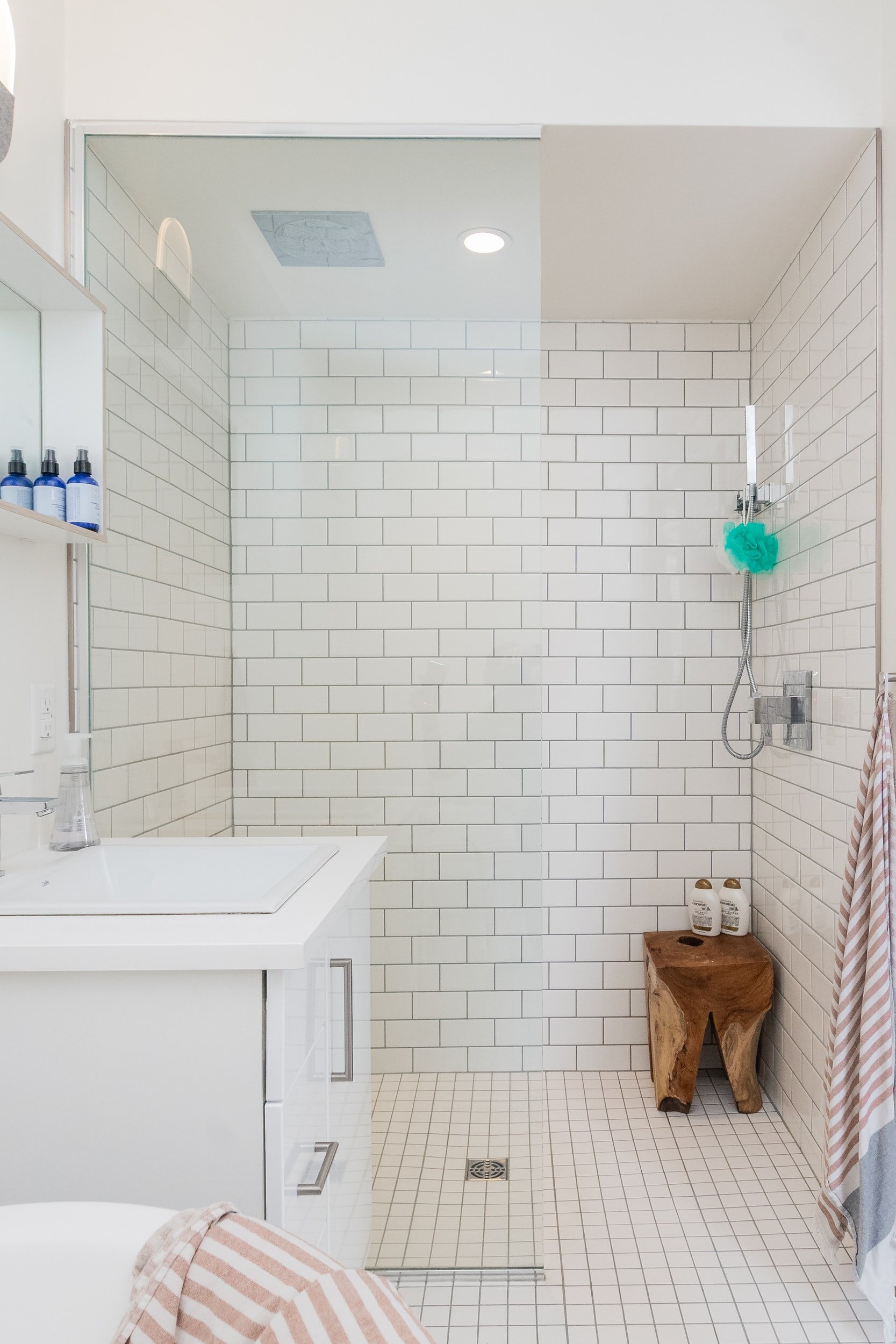






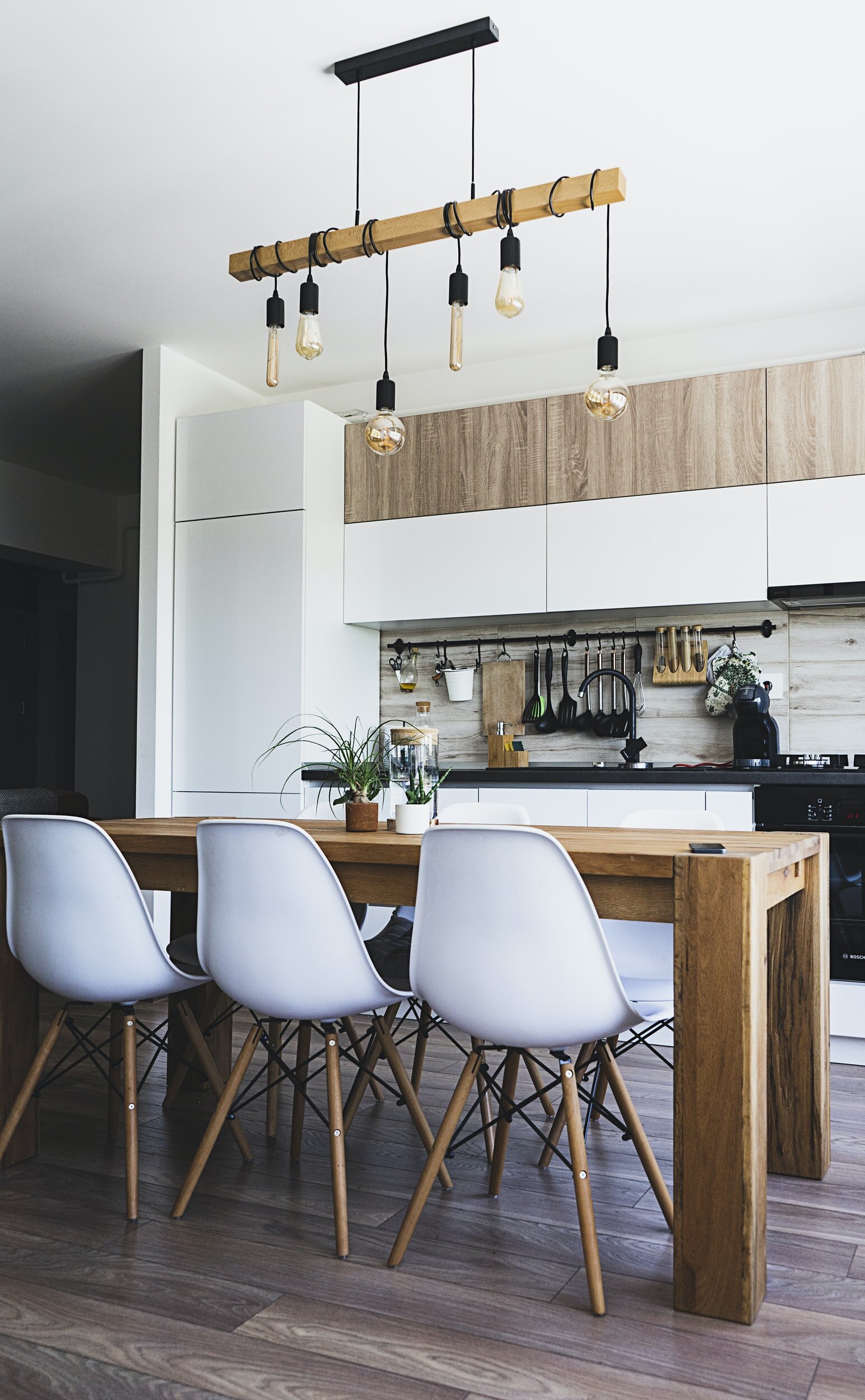







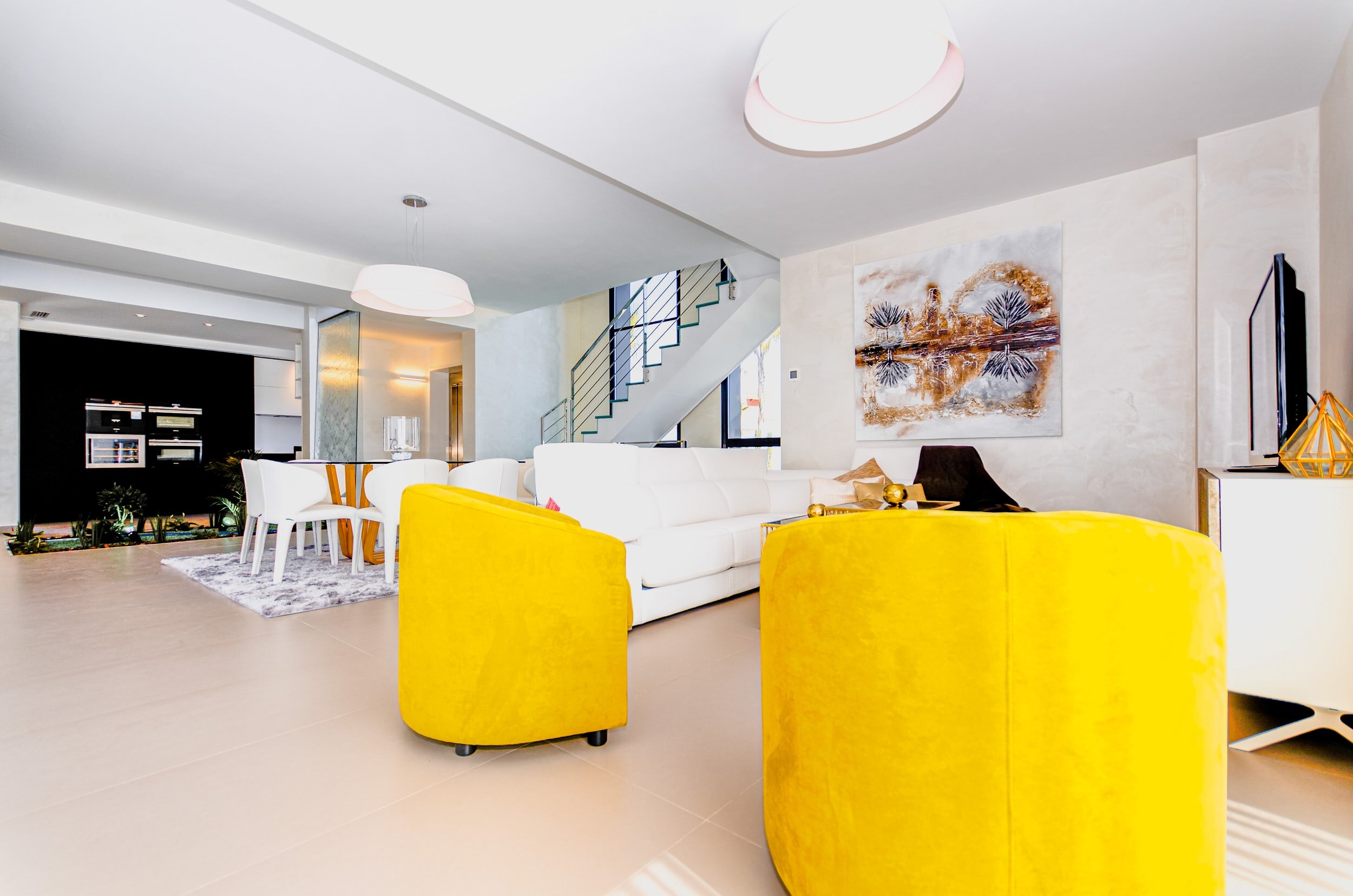














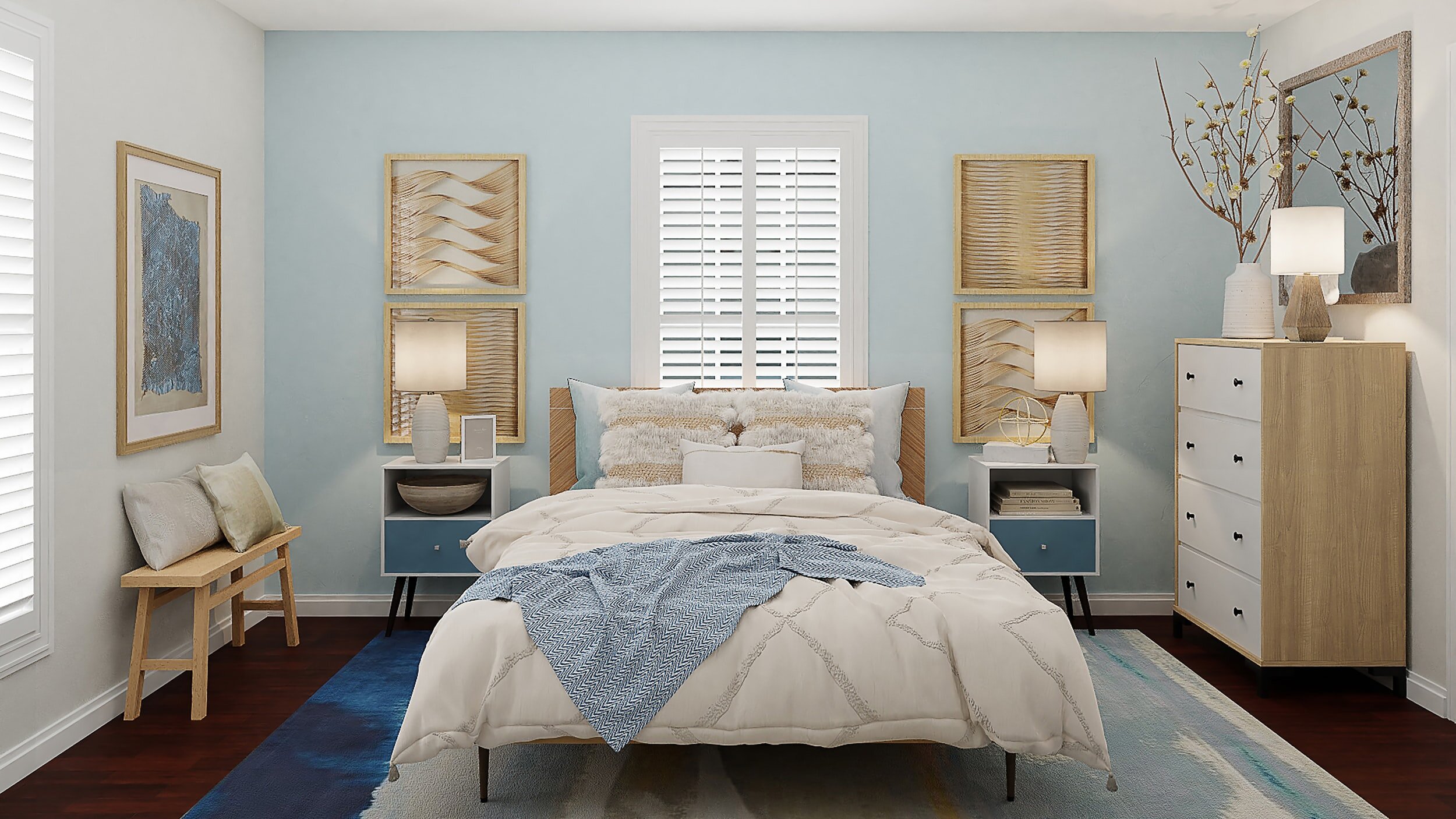











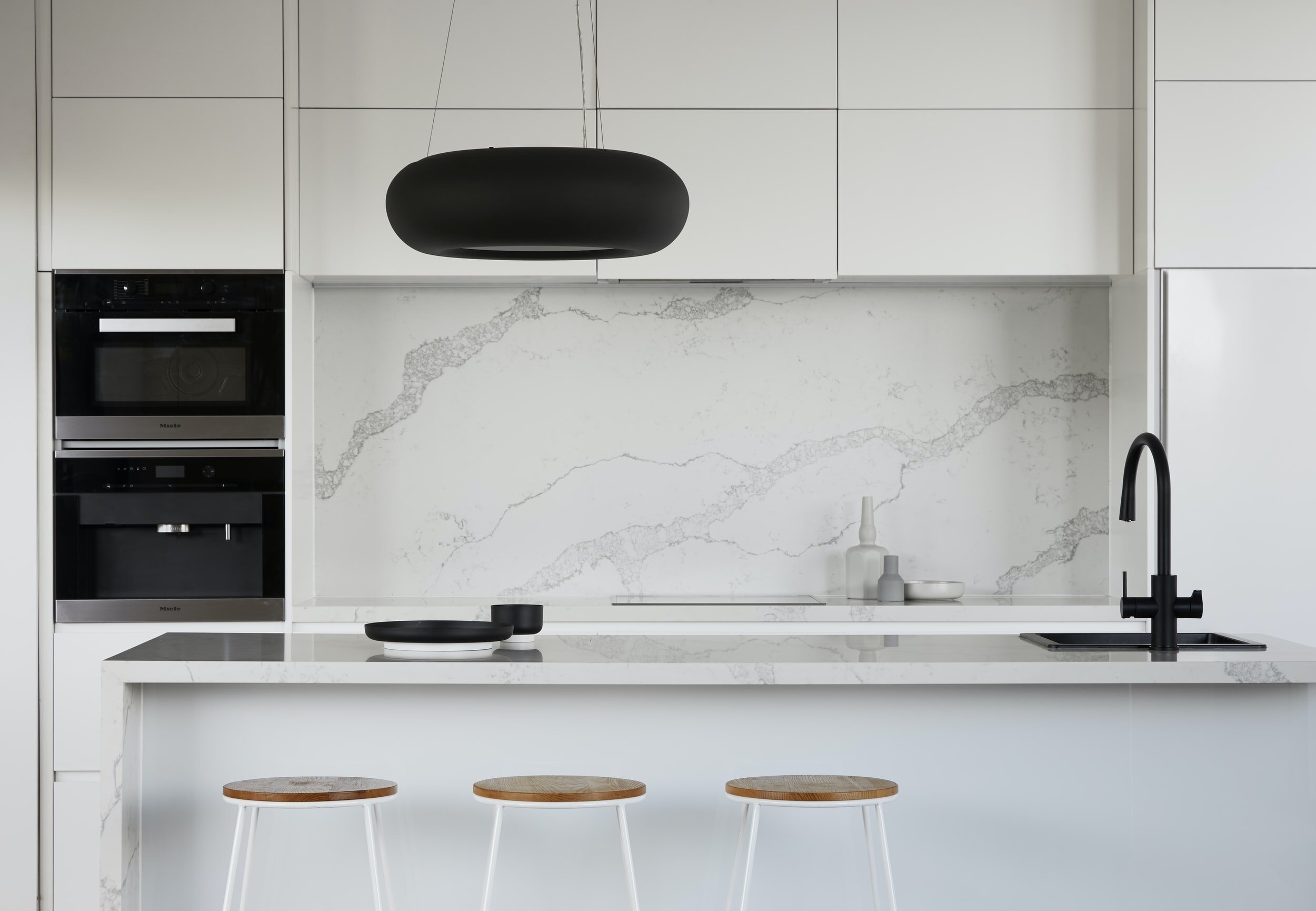

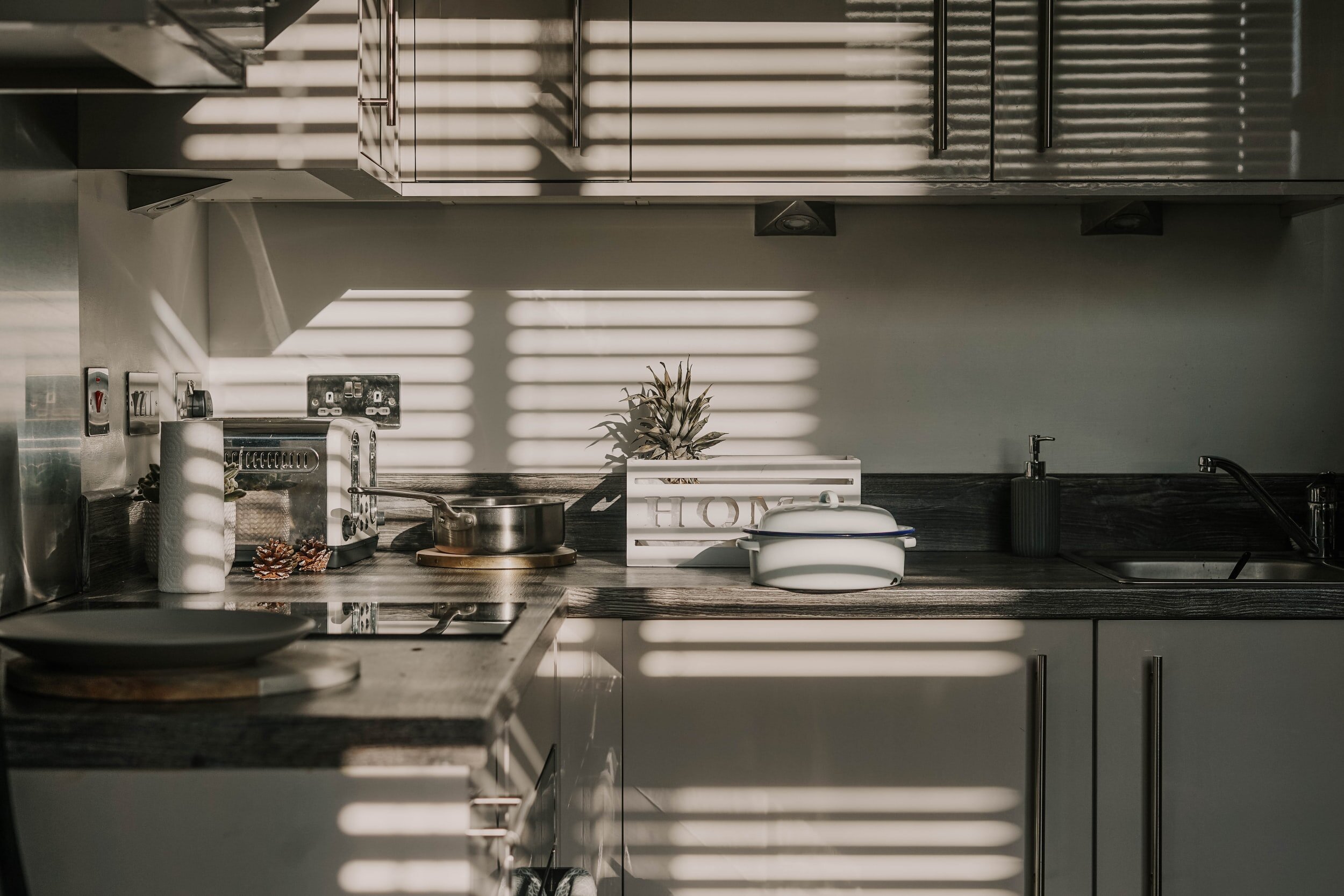

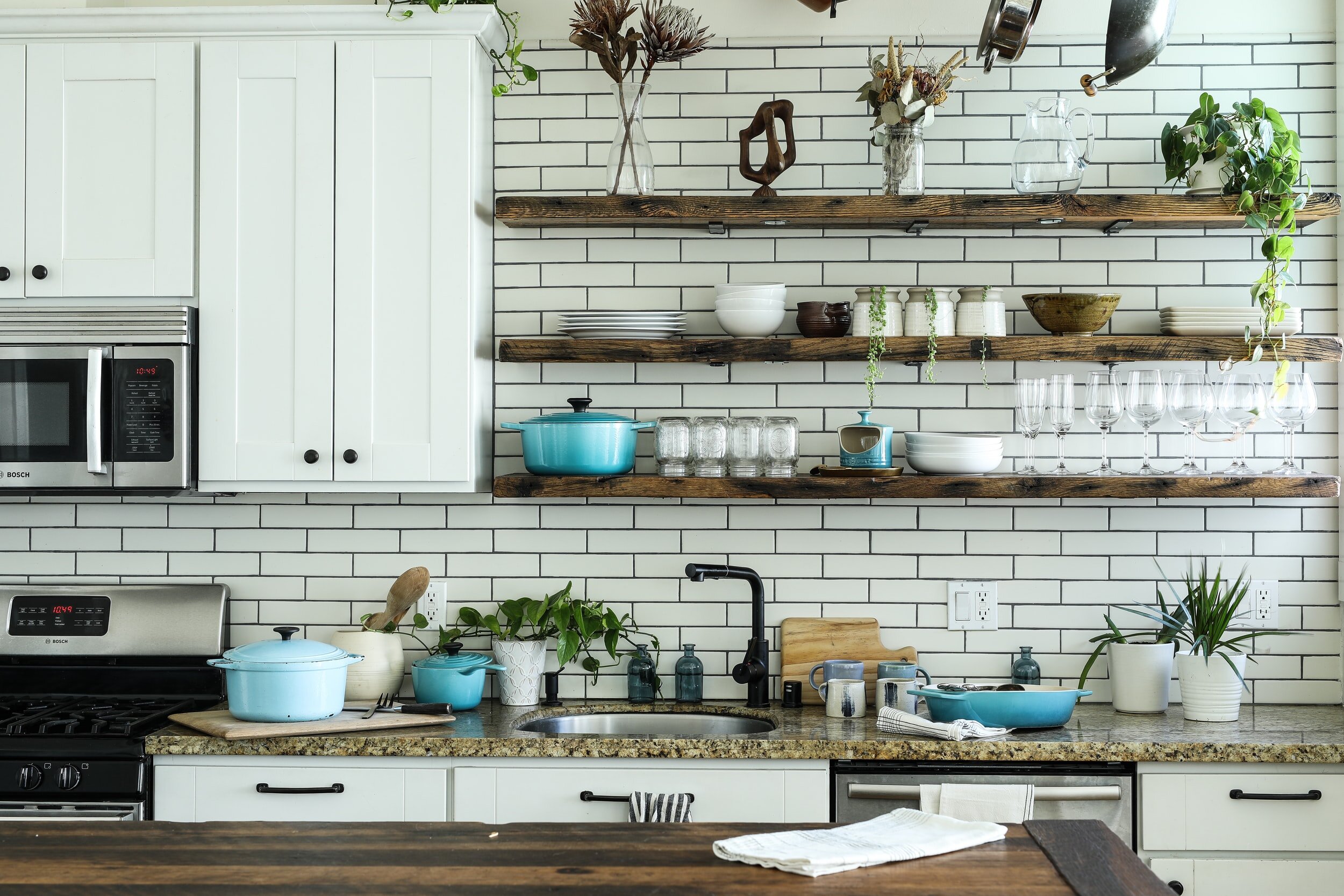
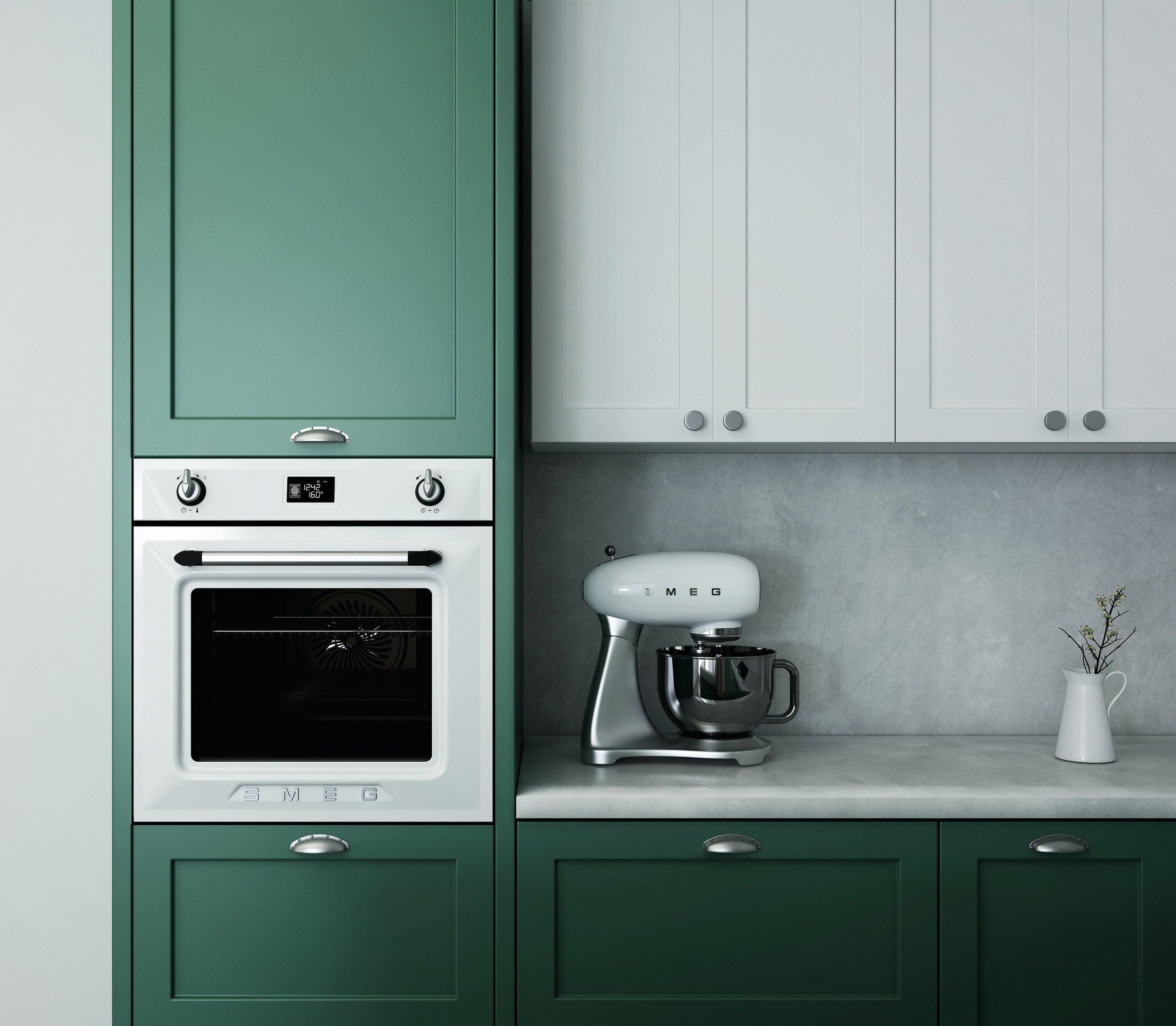



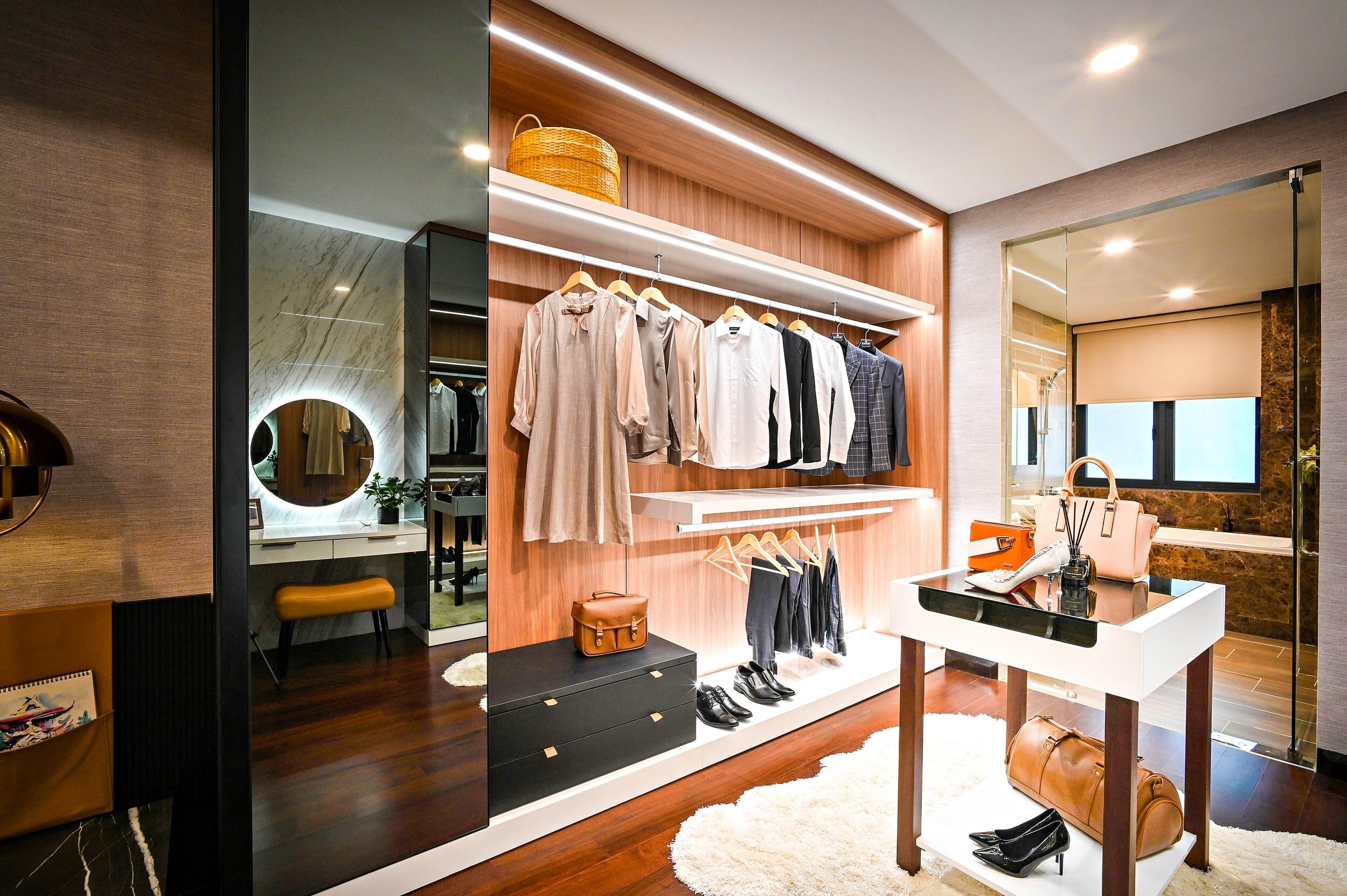





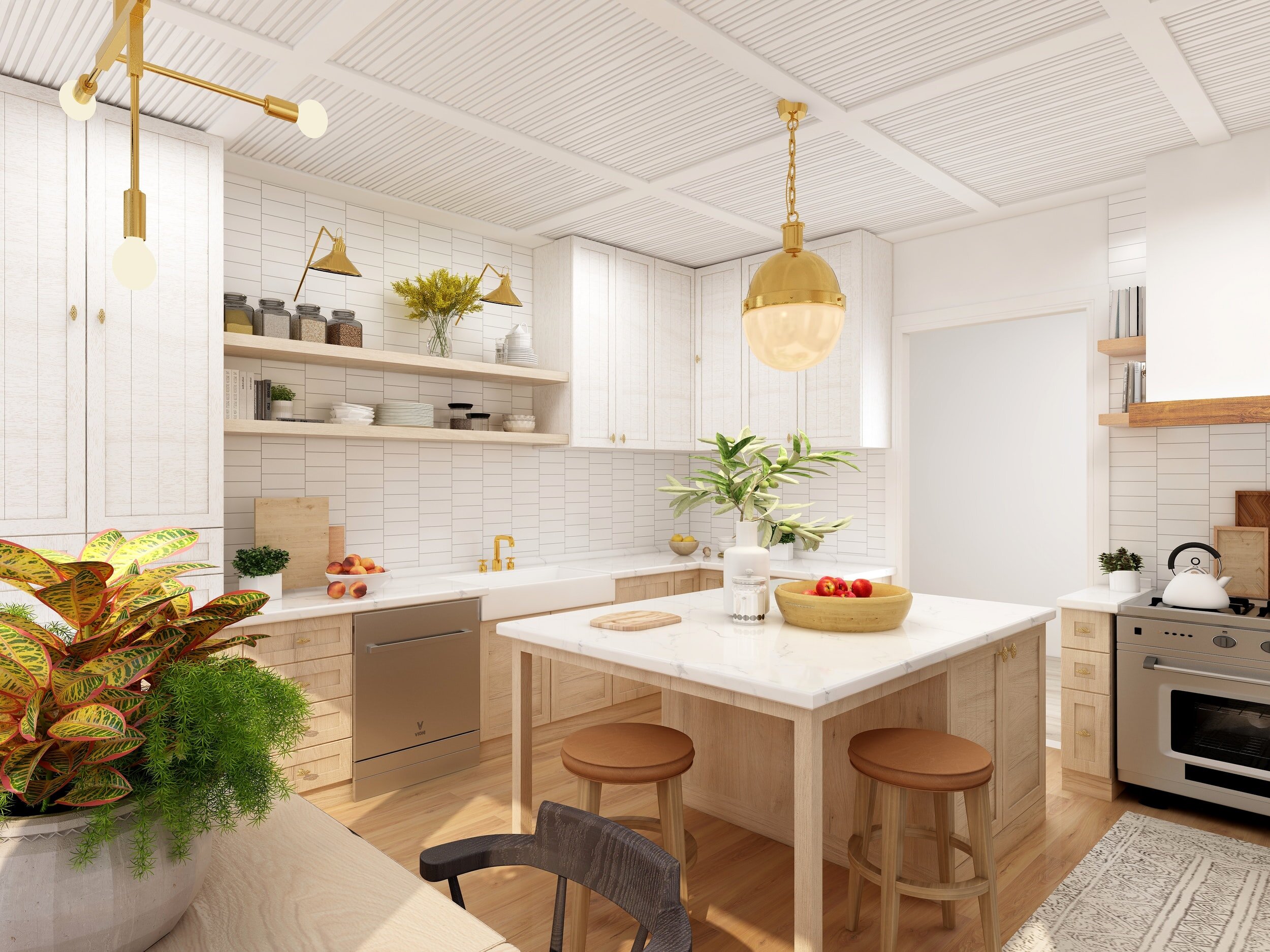








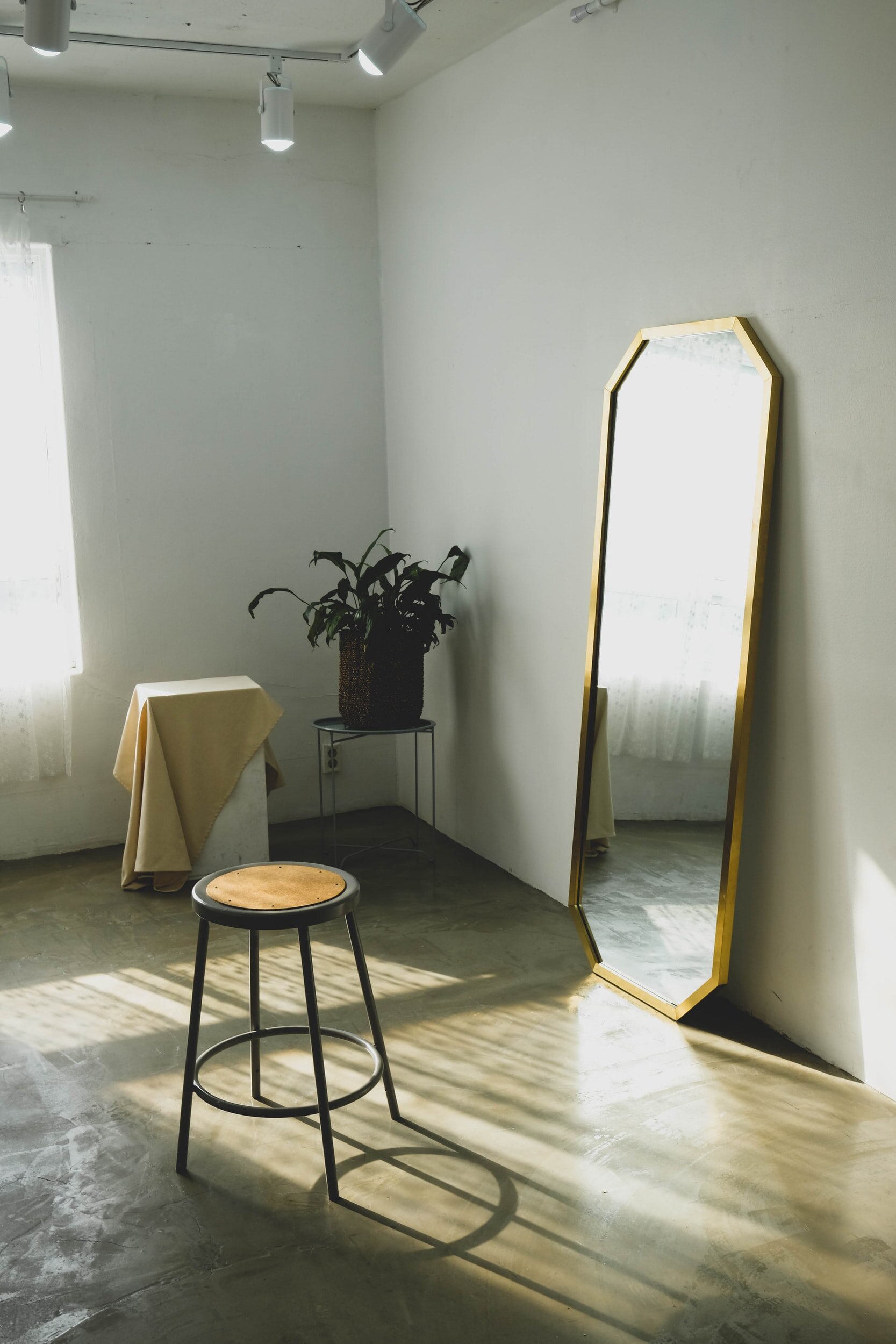
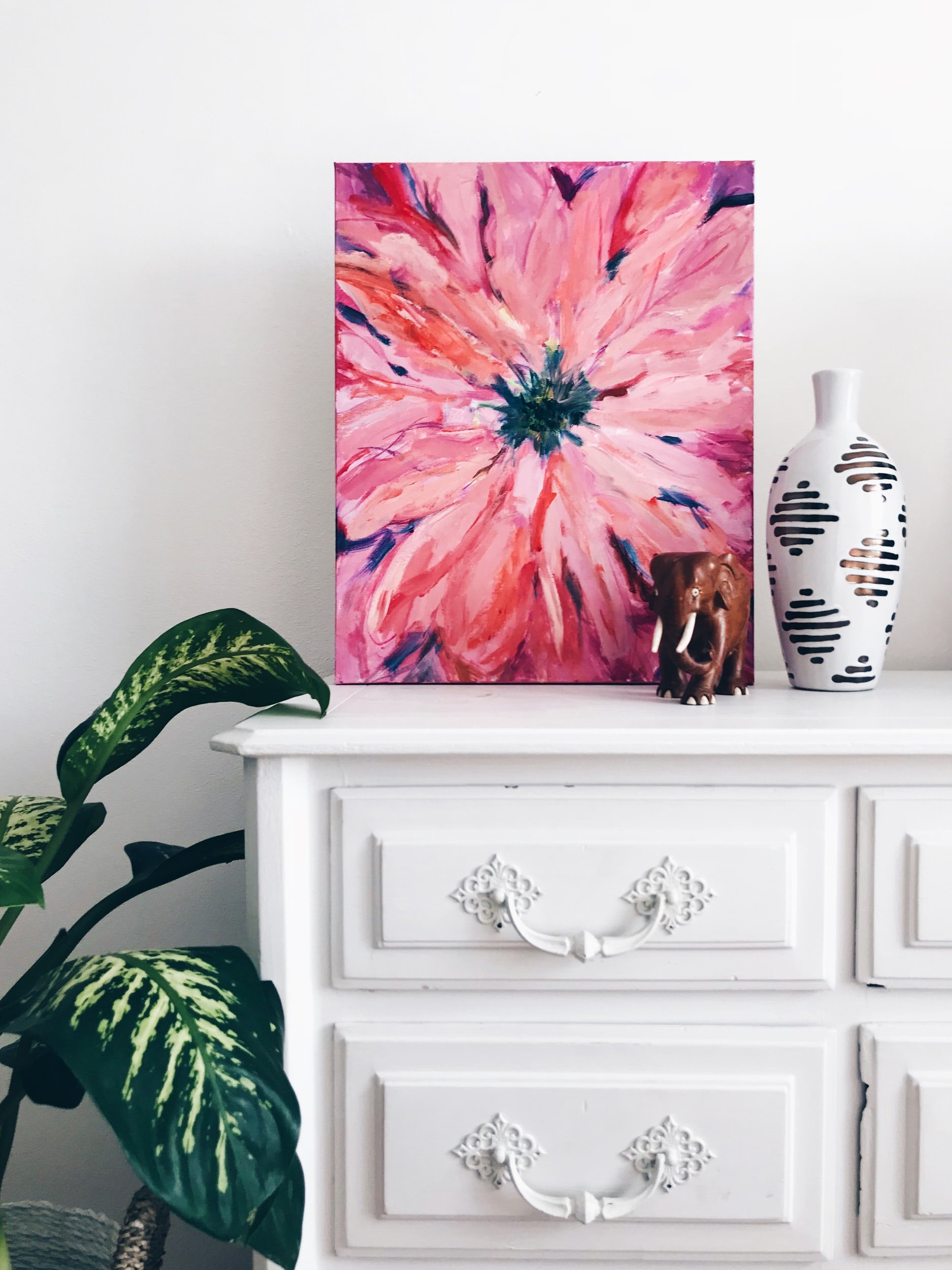
Paint can change the feel of an entire room. Picking paint colours that bring your home to life does not need to be a difficult process. Our guide will help you find the colours that bring your home to life.